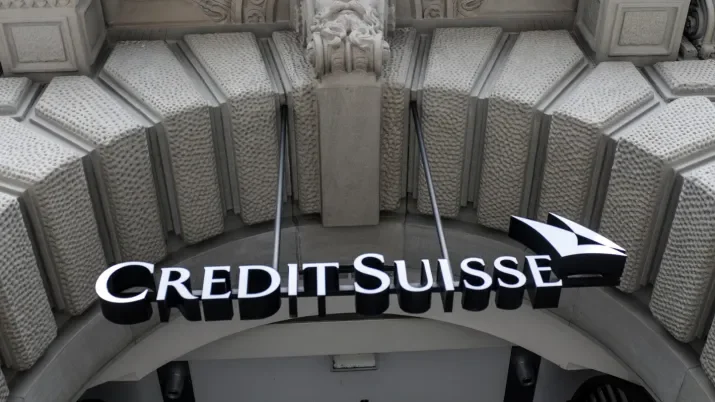Global ABS: A cloudy outlook from sunny Barcelona
After two COVID-hit years last week the European ABS market decamped once again to Barcelona for the 26th annual AFME & IMN Global ABS conference. To European ABS participants this is simply known as the ‘Barca conference’; it’s the biggest annual industry event and it’s where investors, issuers, bankers, lawyers, trustees, rating agencies and a whole range of service providers gather for panel discussions and in-person meetings, to exchange views on the current and future state of the market.
This year we took over half of the TwentyFour ABS team as we wanted to cover as much ground as possible, and that was just as well as over 4,700 industry participants turned up – a new record. As well as plenty of interesting presentations, panels and meetings, this event is a great way to get a better feeling for what everyone in the market is thinking or working on. Normally a clear outlook emerges – at the 2019 event for example we described the mood as ‘cautiously optimistic’ – but this is perhaps the first Barca conference we’ve been to where we’ve struggled to summarise the tone.
Given the year we’ve had across fixed income and indeed the financial markets more broadly, there are clearly a number of things on the minds of both investors and issuers. A recession is looming in the UK and continental Europe. Investor sentiment is focused on the macro backdrop, inflation and interest rate policy, and by extension how these filter through into spread performance, issuance in the second half of the year, and of course credit performance. While most agree that bonds are cheap at these levels, liquidity is much lower than it was just months ago. The market has seen a lot of selling from pension fund investors who are rebalancing after the recent rates moves, and from general credit funds that have been funding outflows with ABS sales. If you speak to 10 participants and ask them where they see spreads in six months’ time, you’ll get 10 different answers and a big range. Dealers are less willing and able to provide liquidity, and while the ABS market is not unique there, the over-regulation of the sector isn’t helping. The theme of regulation comes back at every conference, and for as long as holding a AAA rated Prime RMBS bond costs a bank more capital than owning mortgages outright, it will continue to do so. What is obvious though is that the investment banks have certain sweet spots where they are willing to deploy capital. AAA non-prime RMBS, CLOs and short dated Auto ABS generally work well. Prime RMBS is liquid but with a tighter bid-offer spread they’ll want to turn these assets over quickly. In the mezzanine space many of them seem to prefer CLOs over any asset class as it’s a better use of capital, though balance sheets here are certainly smaller.
One of the things we particularly like doing is meeting up with a large range of lenders. Typically we try to cover most asset classes, but this time we focused on large consumer lenders from Germany, France, Spain and those from the UK that are not London-based, as that’s the asset class where we expected to see the first evidence of cost-of-living increases in terms of weaker performance. These lenders are closest to the borrowers and while they have not seen a significant increase in defaults or arrears, it is comforting to see many tightening lending standards as a precautionary measure. Though performance deterioration is inevitable these lenders are not expecting to see anything like the level of consumer defaults as we saw in 2009-2011 (which importantly did not generally result in losses on ABS structures as the structures are strong enough to withstand quite high levels of deterioration). Rates are increasing and inflation is hurting, but borrowers have been underwritten conservatively irrespective of expectations of an economic slowdown, and there are no forecasts for a significant increase in unemployment, which is by far the most important variable in driving defaults. While I broadly agree with this feedback from lenders, I do think we will see the majority of underperformance come from the non-prime auto loans, consumer loans and credit cards. The simple reason being that these lenders target a different borrower base, and those borrowers will be a lot more sensitive to the higher cost of living. We tend to like the large prime lenders as we value the enormous amount of historical data they have to help us build scenarios for our stress testing.
Normally we can see a big pipeline of new deals lining up ahead of the conference and then a few very busy weeks before the start of the summer – not this year. Higher spreads make it less attractive for issuers to bring a deal today and banks currently prefer to issue covered bonds (a fixed rate product). Several non-bank issuers are sitting on warehouses that will need to be termed out and in recent weeks we have seen club-style syndication of RMBS. This trend will likely continue for the coming months, like we saw in Q3 2020 as well as in Q1 2016. One interesting development we have seen is the return of bank treasury investors that have been anchoring a number of new transactions, some of these in a loan format rather than bonds (as they get favourable accounting treatment for the former). You can’t blame them, since at 1.5% over the risk-free rate for 2-3yr AAA rated paper they should be filling their boots, especially as they can repo these bonds with the ECB and BoE in case they need liquidity.
This wasn’t the most positive of Barca conferences I’ve been to in the last decade. Spreads are wide, liquidity is poor and expensive, and investors are nervous. Issuers are still ignoring the wide spreads but ultimately will see their cost of funding increase, and all of this is set against a pretty poor economic backdrop. Clearly not much to be positive about, but let’s not forget that as investors in European ABS we are now getting paid a lot more than we were just a few months ago. Investment grade spreads have almost doubled in many asset classes and the curve is now a lot steeper, so risk is priced more appropriately. While we do expect to see arrears increase, ultimately we take a lot of comfort from speaking frequently and in depth with lenders, and we can see the starting position for consumers is much stronger than it was in 2007. In addition, with central banks signalling further rate hikes to come the floating rate nature of European ABS gives us more and more income to deal with volatility. Given we expect this volatility to stick around for at least the remainder of 2022, positioning and managing your liquidity buckets is more important than it has been for a long time.




